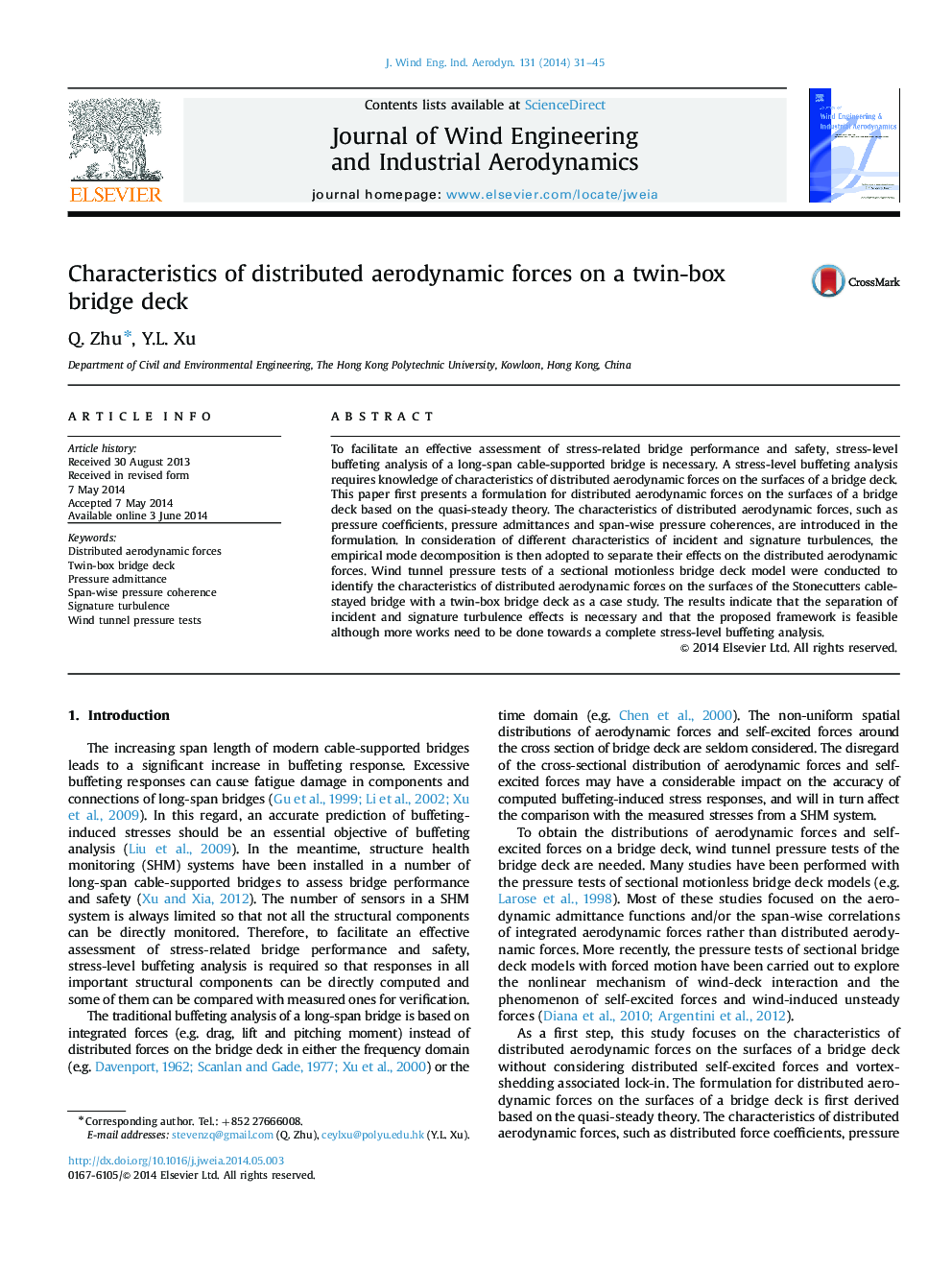| Article ID | Journal | Published Year | Pages | File Type |
|---|---|---|---|---|
| 293499 | Journal of Wind Engineering and Industrial Aerodynamics | 2014 | 15 Pages |
•Formularize distributed aerodynamic forces on the surfaces of a bridge deck based on quasi-steady theory.•Separate incident and signature turbulence effects on distributed aerodynamic forces using empirical mode decomposition.•Identify aerodynamic characteristics including pressure coefficients, pressure admittances and span-wise pressure coherence through wind tunnel tests.•A twin-box bridge deck was used as a case study.
To facilitate an effective assessment of stress-related bridge performance and safety, stress-level buffeting analysis of a long-span cable-supported bridge is necessary. A stress-level buffeting analysis requires knowledge of characteristics of distributed aerodynamic forces on the surfaces of a bridge deck. This paper first presents a formulation for distributed aerodynamic forces on the surfaces of a bridge deck based on the quasi-steady theory. The characteristics of distributed aerodynamic forces, such as pressure coefficients, pressure admittances and span-wise pressure coherences, are introduced in the formulation. In consideration of different characteristics of incident and signature turbulences, the empirical mode decomposition is then adopted to separate their effects on the distributed aerodynamic forces. Wind tunnel pressure tests of a sectional motionless bridge deck model were conducted to identify the characteristics of distributed aerodynamic forces on the surfaces of the Stonecutters cable-stayed bridge with a twin-box bridge deck as a case study. The results indicate that the separation of incident and signature turbulence effects is necessary and that the proposed framework is feasible although more works need to be done towards a complete stress-level buffeting analysis.
